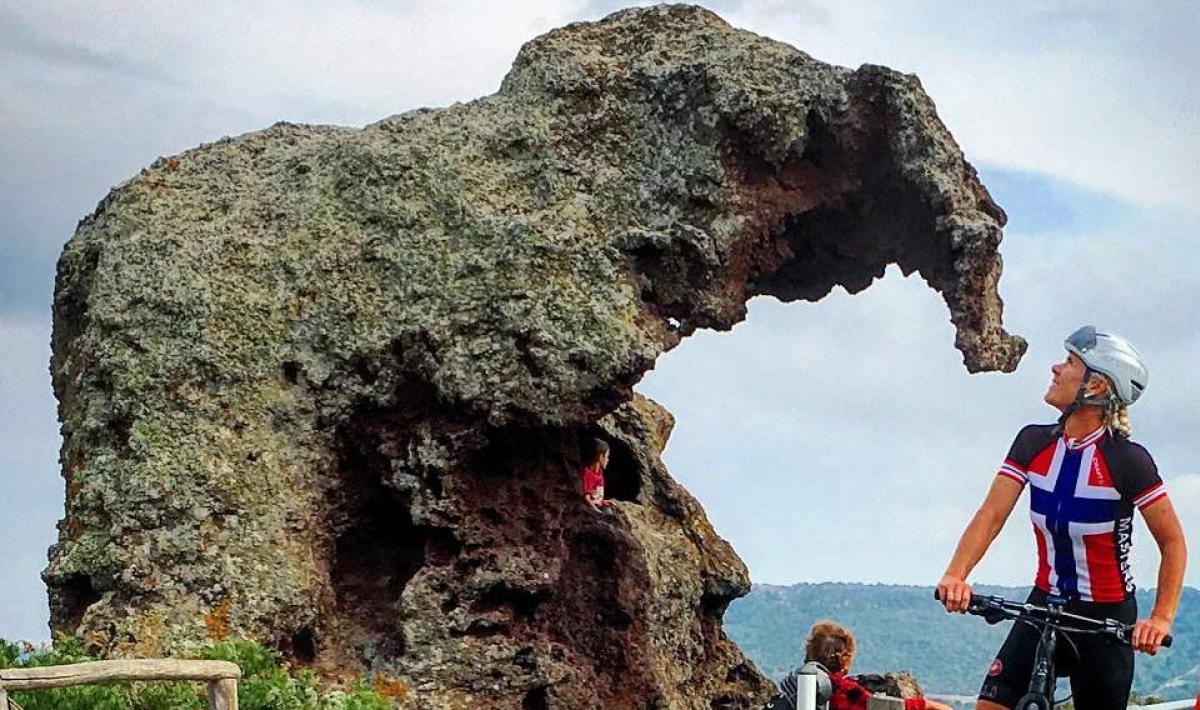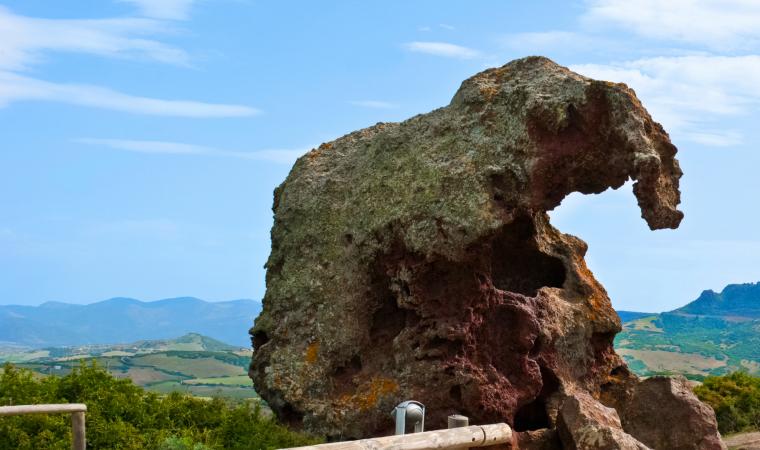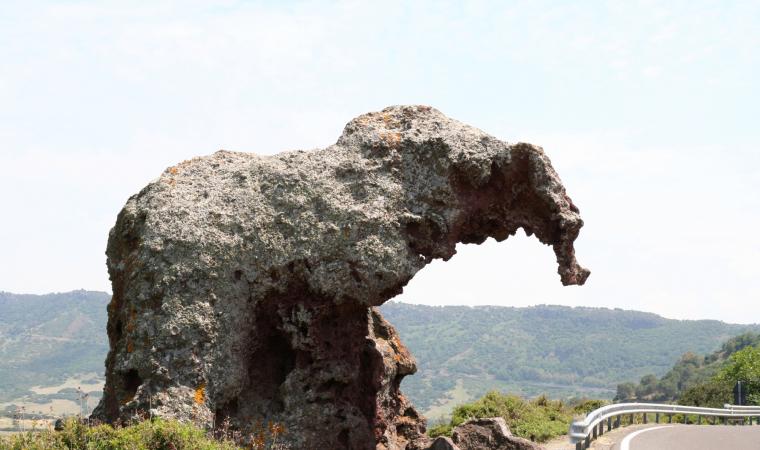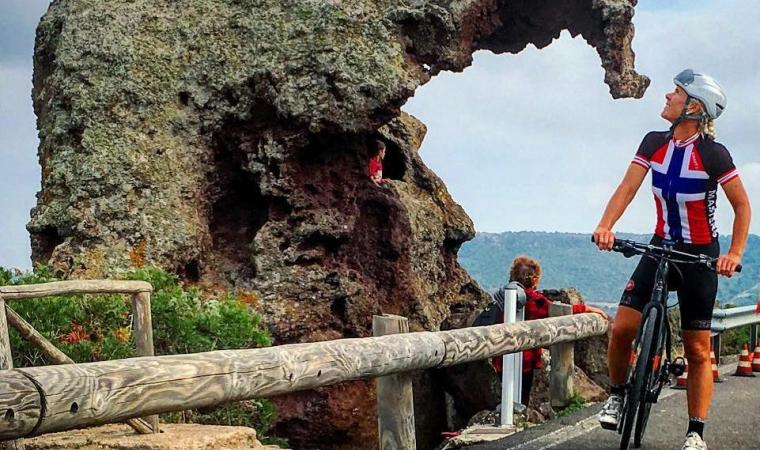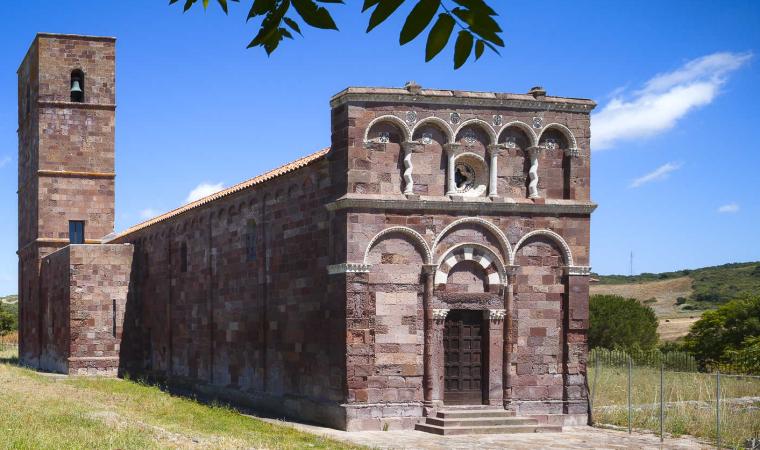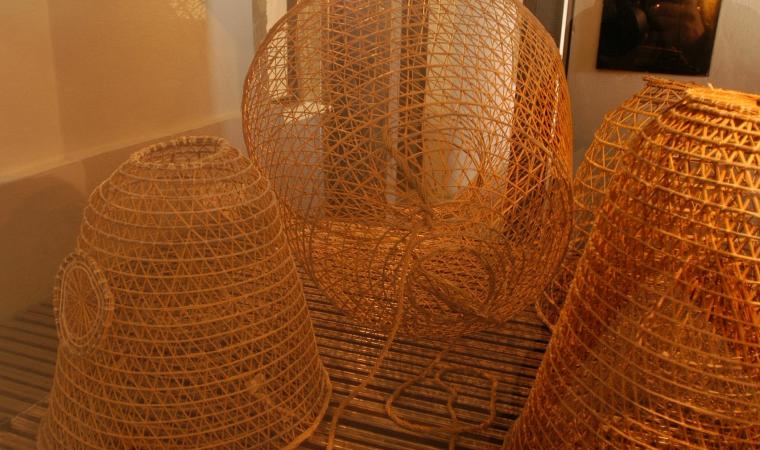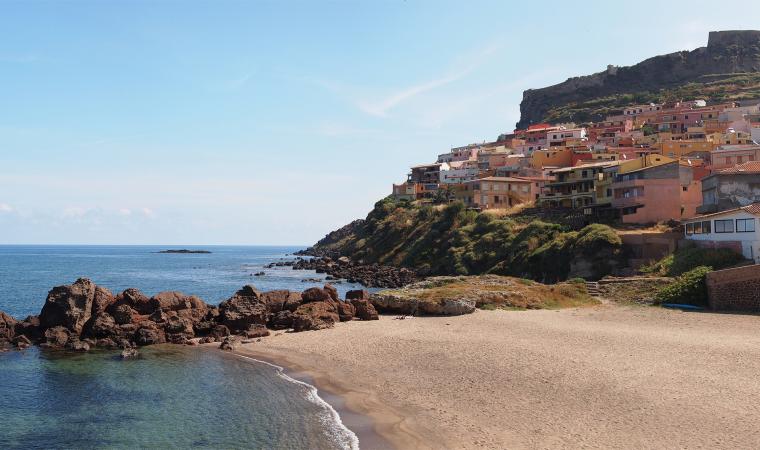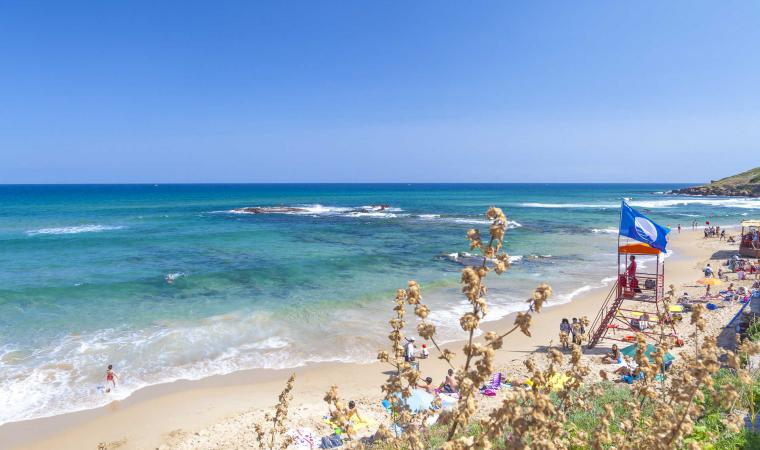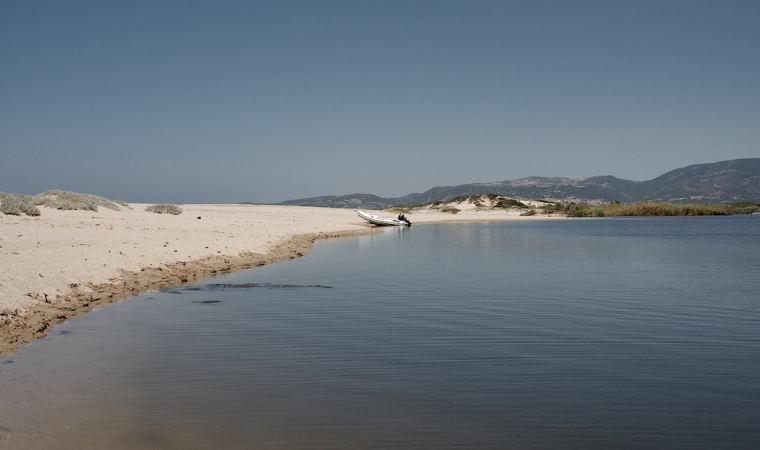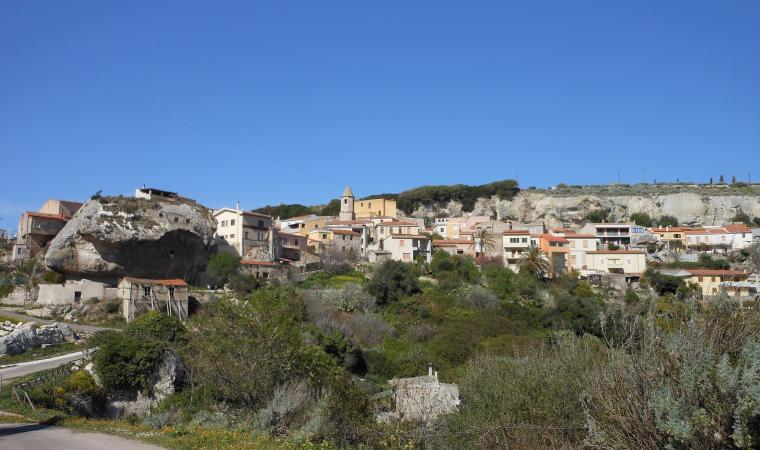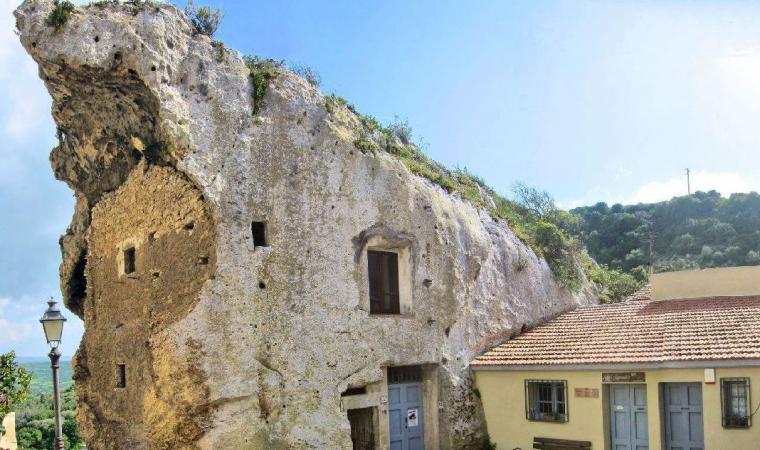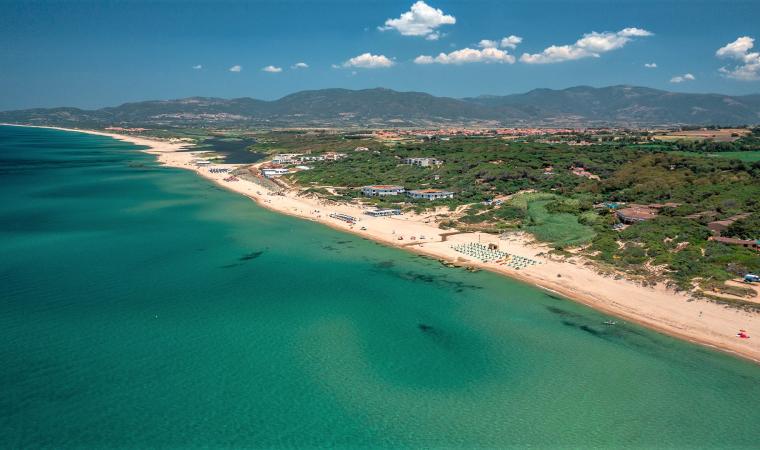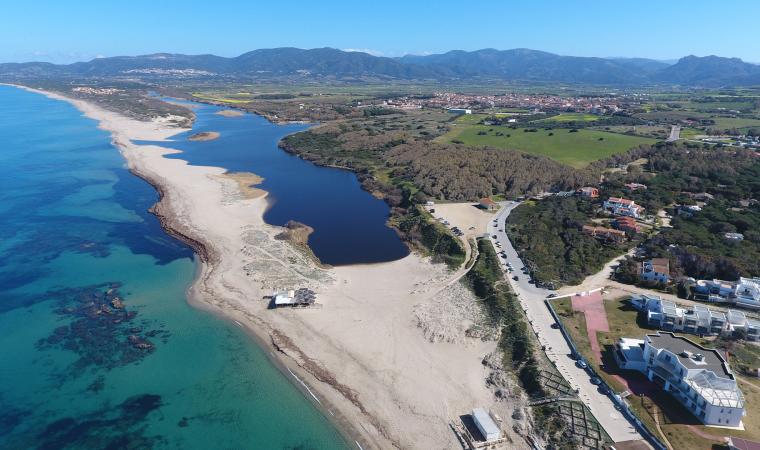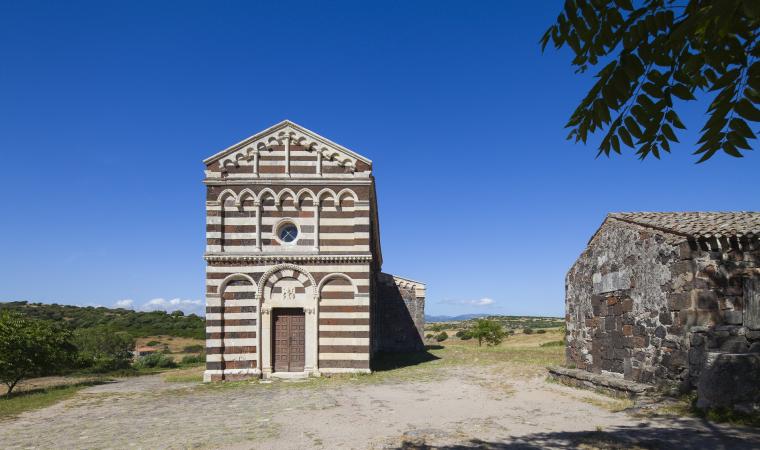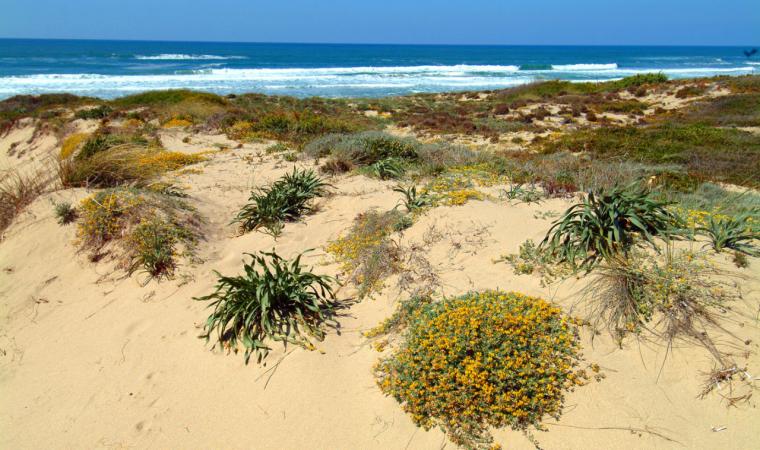The silhouette is unmistakable, yet the more you look at it, the more amazing it becomes, making you feel like you have, for some reason, ended up in the savannah. An elephant stands by the side of the road and it also has a precious piece of archaeological evidence in its belly. You will encounter it four kilometres from the town of Castelsardo, along state road SS 134 in the Sedini direction. It is a rust-coloured trachyte rock that became detached from the massif of Monte Castellazzu in antiquity and rolled downhill. Here, atmospheric agents shaped it into its present form, making it look like a pachyderm in a sitting position.
The original name of the rock is sa pedra pertunta, or ‘the pierced stone’. It is about four metres high and you will be even more surprised when, standing in front of it, you learn the reason for its original name. In fact, there are two domus de Janas inside it, carved on different levels, probably in the late Neolithic period (3200-2800 BC). Together with 16 other pre-Nuragic necropolises, it has been part of the Unesco World Heritage Sites of Sardinia since 2025. The upper tomb has been damaged by the collapse of the front part of the rock and originally had three small rooms. Some scholars theorise that the destruction of the first domus had already taken place while it was in use, which may be why the second was built, making use of the rock below. It contains four rooms, originally preceded by a dromos, which is an open-air corridor. From the quadrangular entrance door with a frame recess, you can enter the first room, where two bovine protomes with crescent-shaped horns have been sculpted in relief on the walls. You will also notice a hoof carved into the rock and a band carved below the ceiling line. A door leads to the second room, also decorated with architectural motifs. You can get to the other two rooms from here.
Not far from the 'Elephant' you can admire the nuraghe Paddaggiu: the main tower is in good condition, almost nine metres high and with a diameter of 11 metres, but the original structure also included a bastion with two secondary towers and a rampart, within which some huts were located. A visit to the medieval village must be combined with the exploration of the area around Castelsardo, starting with the spectacular Doria Castle. From its walls, you can admire an enchanting view of the gulf of Asinara, and then, inside it, pay a visit to the Museum of Mediterranean Weaving. Among the distinctive features of one of the ‘most beautiful villages in Italy’ are the Holy Week rituals, brimming with charm and appeal, while in the summer, the beaches surrounded by red trachyte cliffs at the Castelsardo Marina and in the district of Lu Bagnu await you.

